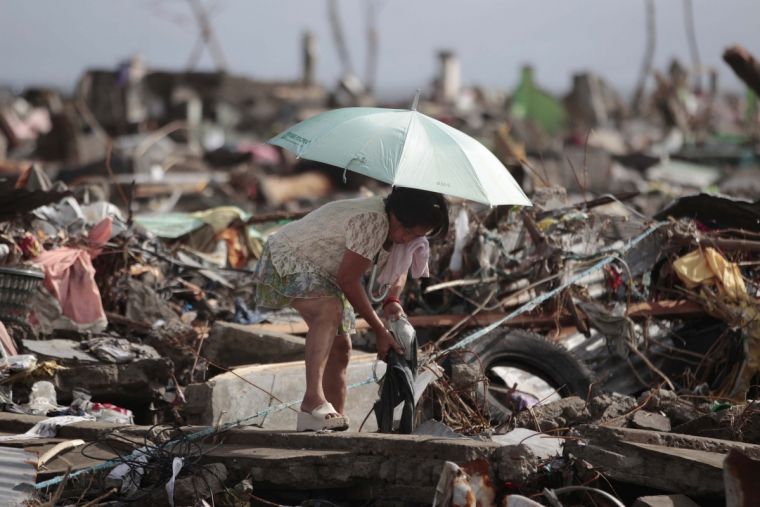More storms hit the Philippines: 'a disaster on top of an already catastrophic disaster'

Survivors of Typhoon Haiyan, one of the biggest and most powerful storms in recorded history, have been hit with yet another catastrophe as a second tropical storm wreaked havoc on the Philippines this weekend.
Thousands of people were forced to flee their already inadequate makeshift homes as a fresh wave of storms flattened tents and ripped the roofing off emergency shelters, leaving countless victims vulnerable to the vicious winds and rain.
The town of Guiuan on Samar island was the first area to be devastated when Haiyan hit on November 8, and is now one of the worst affected by this new disaster.
Many temporary tarpaulin shelters have collapsed or been ripped apart, and over 1,000 Filipinos are now seeking shelter in government buildings across the city.
"The cyclone is a reminder that more needs to be done for vulnerable displaced people," said Russell Geekie, spokesperson for the UN Office for the Co-ordination of Humanitarian Affairs, who also noted that the UN's shelter budget is currently "only a fifth funded", at 24 per cent of what is needed.
This means that an estimated 400,000 people will not receive adequate temporary housing unless extra money is raised.
International aid charity Oxfam is working to meet the needs of the Filipino people, but is struggling with the sheer scale of the problems that have only been compounded by the new storms.
"People are struggling to find places that are warm and out of harm's way," said Country Director in the Philippines, Justin Morgan.
"More were made homeless in the Philippines by Typhoon Haiyan than by the 2004 Asian Tsunami and with only three out of 32 evacuation centres remaining in Guiuan...this is a disaster on top of an already catastrophic disaster."
Though the government is doing what it can to provide emergency shelter for its citizens, there is still a shocking number of people who have been left destitute and homeless by the recent disasters. President Benigo appealed for assistance from the international community in December, stressing that the country needed to safeguard against future storms.
"From now until December 2014 we will be preoccupied with critical immediate investments such as the rebuilding and repair of infrastructure and the construction of temporary houses," he said in a statement.
"We cannot allow ourselves to be trapped in a vicious cycle of destruction and reconstruction. We are going to build back better.
"The task immediately before us lies in ensuring that the communities that rise again do so stronger, better and more resilient than before," he asserted.
Though Haiyan was on an unprecedented scale, the Philippines are no stranger to natural disasters; the typhoon was the 25th tropical storm to hit the country in 2013. Morgan labels it "one of the most disaster prone countries in the world", noting that it is "critical we quickly provide safe homes and build quality evacuation centres for those continuing to live in dangerous and difficult locations".
"The government has committed to build better housing than the poor region had before the typhoon hit and these storms show just how crucial it is that they keep their promise."
The UK government has responded generously to the disaster, with the Department for International Development giving more than £60 million and deploying two royal navy ships, eleven military aircraft and sixteen aid cargo flights.
DFID has provided shelter for 245,000 people, safe drinking water for 650,000 and almost 20,000 hygiene kits among other sources of aid.
Typhoon Haiyan killed more than 6,000 and displaced around 4 million. A further 800,000 have been affected by the latest rainfall, meaning there is a long way to go before the Philippines is back on its feet.











